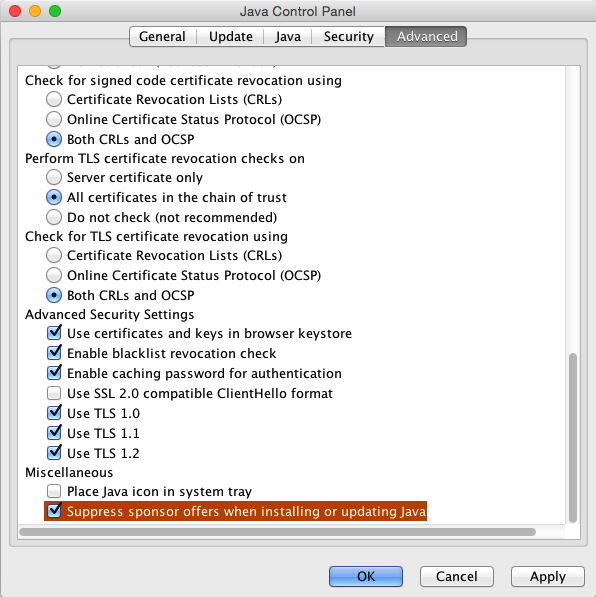

The problem is that you’re not being routed to the correct download website when you click “More Info.” This isn’t a complicated issue to fix, but it is an indirect one.

When you visit the download website to update Java, you find that the issue isn’t resolved! You’re still getting the same pop-up.
Java version '1.7.009' Java(TM) SE Runtime Environment (build 1.7.009-b05) Java HotSpot(TM) 64-Bit Server VM (build 23.5-b02, mixed mode) Topics: java, jdk, mac osx. How to Download and Install Java JDK on Mac OS X Do you want to know how to install the Java JDK 11 (Java SE Development Kit) on your Mac? Well, you're in th. Oracle Java (Version 7 and later versions) requires an Intel-based Mac running Mac OS X 10.7.3 (Lion) or later. Oracle also provides the latest OpenJDK release under the open source GPL License at. Get the latest version of the Java Runtime Environment (JRE) for Windows, Mac, Solaris, and Linux. For a list of pointers to packages of the BSD Port for DragonFly BSD, FreeBSD, Mac OS X, NetBSD and OpenBSD, please see the BSD. If you want to develop Java programs then install the java-1.6.0-openjdk-devel package. $ su -c 'yum install java-1.6.0-openjdk' The java-1.6.0-openjdk package contains just the Java Runtime Environment. Without a compatible Java command-line tool for these software, you’ll get this pop-up every time you turn on your Mac computer. Older software such as Adobe Photoshop and Illustrator requires legacy Java support. The reason you’re receiving this message is due to the removal of Java support in newer versions of OS X for security reasons. It says, “To use the java command-line tool, you need to install a JDK.” It asks you to click “More Info” and visit the JDK (Java Developer Kit) download website. tar.gz file and typing tar -zxf openjdk-18-ea+28_macos-圆4_ -C ~/jdk.After upgrading to a newer version of Mac OS X (Yosemite 10.10 and El Capitan 10.11) or macOS (Sierra 10.12 and High Sierra 10.13), you may end up getting an annoying new pop-up message whenever you start your computer. 

Unpack JDK by opening your terminal (such as iTerm2, kitty, Terminal…), going to the directory in which you saved JDK. Since I have a few JDKs I keep them all under the same parent directory, in my case ~/jdk. After the file finished downloading we have to unpack it because it’s gzipped tar file. If you have new M1 Mac choose macOS/AArch64, otherwise choose macOS/圆4. Near the top you’ll see build number and download links for various operating systems. In this article I will show you how to install JDK 18 on MacOS and to setup IntelliJ IDEA so you can write Java applications against it. Even though it isn’t a LTS release, it’s worth installing it so we can test new features. Java 18 is currently the latest version of Java.








 0 kommentar(er)
0 kommentar(er)
